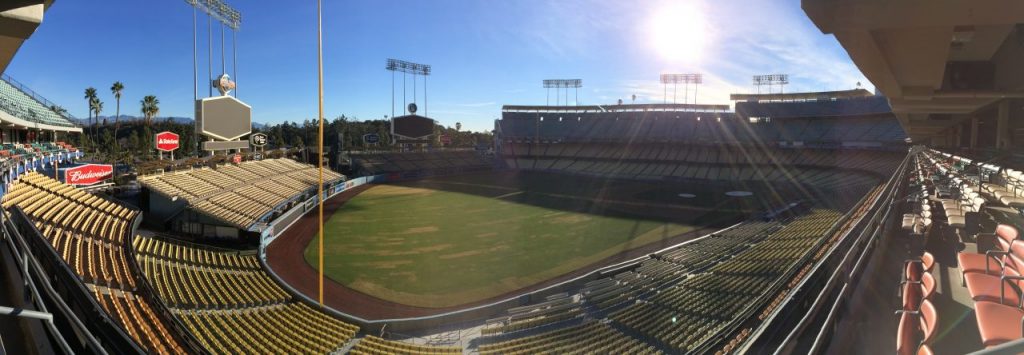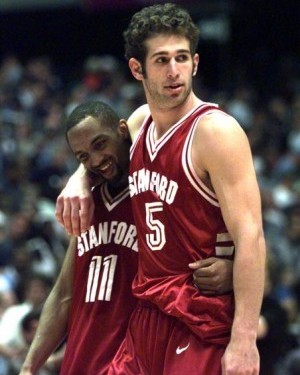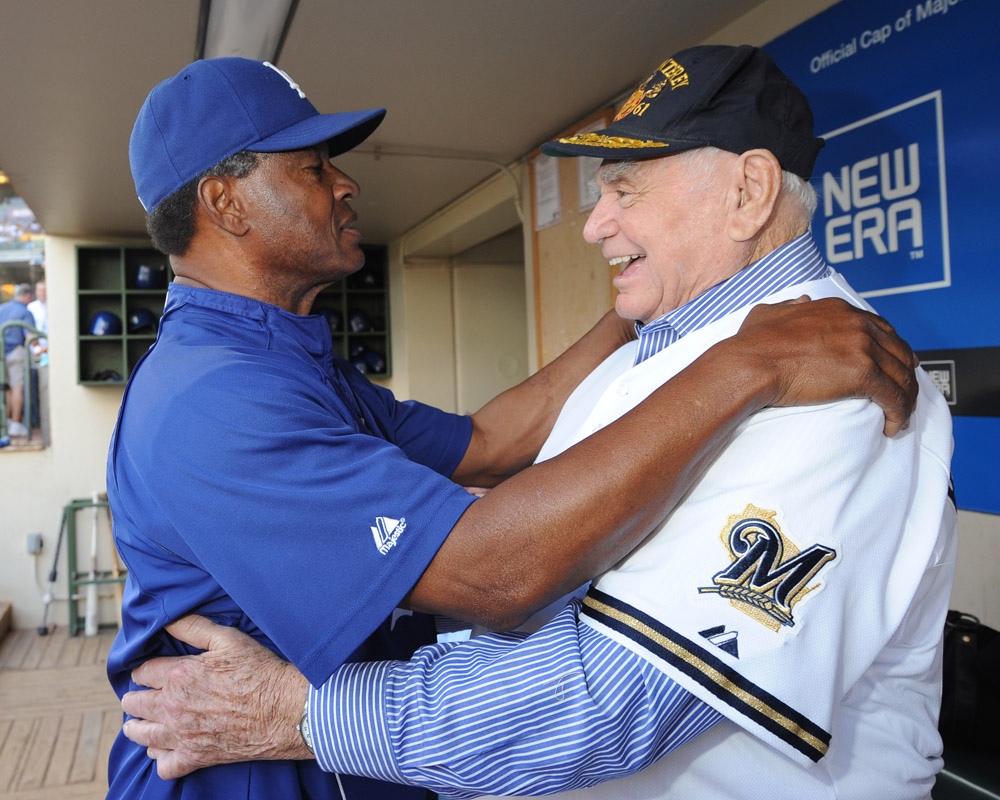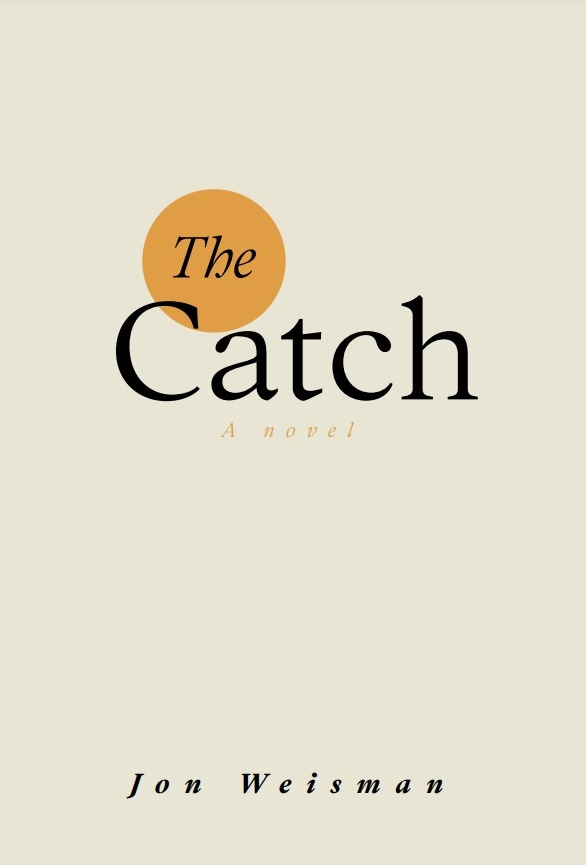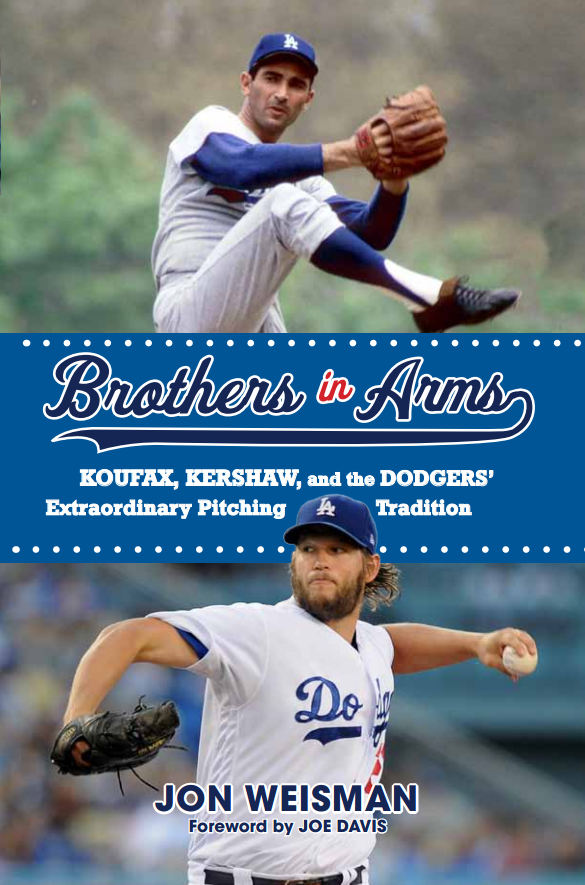Robert Creamer’s “Babe,” I believe, was the first grown-up baseball biography I ever read. Creamer passed away at the age of 90 this week. Alex Belth offers an appreciation of Creamer at Bronx Banter, including a link to a 1964 Sports Illustrated time capsule of a piece on Vin Scully.
Category: Farewells (Page 3 of 5)
The most famous player from Stanford’s 1997-98 Final Four men’s basketball team is Mark Madsen, whose roar punctuated the team’s final-minute rally in the 1998 Elite Eight against Rhode Island in St. Louis – the last March Madness game I attended.
But the final points scored by the team that year came during another furious comeback attempt in the national semifinal against Kentucky, a three-pointer from the baseline that I can still remember with seconds remaining in overtime that cut the Wildcats’ lead to a single point. That shot came from Stanford’s captain, Peter Sauer, the kind of steadfast player no championship team could do without.
It was barely 12 years ago. It was incomprehensible to learn today that Sauer collapsed and died while playing a rec hoops game Sunday in New York – 35 years old. A financial executive, Sauer leaves behind a wife and three daughters. His father is former Pirates president Mark Sauer.
From Laurence Arnold of Bloomberg:
… After Stanford, he signed with the Atlanta Hawks of the National Basketball Association and was cut in the summer of 1999, according to a Pittsburgh Post-Gazette profile in July 2000. He then moved to Greece to play for the B.C. Iraklis Thessaloniki professional team, shunning minor leagues in the U.S.
“Basketball will take me places and afford me experiences I might not have had,” Sauer told the Post-Gazette. “But it is not my life. I see myself playing maybe three to five more years and then going out and getting a real job and living a more normal existence.” …
* * *
And another farewell, to a Los Angeles Ram of my youth, offensive lineman John Williams. From the Times:
… It took him five years as a part-time student before he earned his doctorate in dentistry. He retired from the NFL after tearing a calf muscle during the 1979 season and moved back to Minneapolis to open his dental office.
The 6-foot, 3-inch 256-pounder described his off-the-field work with patients in the Times interview.
“There is curiosity and some of that normal fan-athlete identification,” he said. “But the main thing is rapport. Rapport is everything in dentistry. The ability to instill confidence.”
In Minneapolis, Williams worked to revitalize the urban district where he established his business and was named the city’s volunteer of the year in 1992.
Trained in forensic dentistry, Williams joined a team of public health professionals who helped identify remains of victims after the 9/11 terrorist attacks. …
This 2009 photo is from a collection by Jon SooHoo of the Dodgers.
The real deal …
Longtime Reds reliever and “Airplane” icon Pedro Borbon, whose son pitched for the Dodgers, has passed away at the age of 65 from cancer.
“He was always talking about that,” his son told The Associated Press. “A lot of people remember him by that. He liked that.”
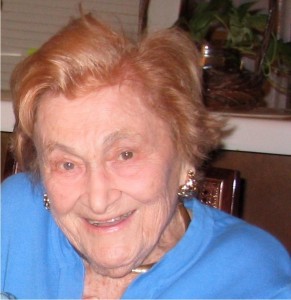 My grandmother, Sue Weisman, whom some of you have gotten to know here over the years, has passed away. She was 101.
My grandmother, Sue Weisman, whom some of you have gotten to know here over the years, has passed away. She was 101.
Grandma Sue’s 102nd birthday would have been a week from Saturday, and as frail as she became in the past year or so, you never quite believed she wouldn’t roll right into through that milestone and many more. She was indomitable. I’m not sure I’ve ever known a woman who was more self-possessed.
She was born in New York into a childhood, the sixth of eight siblings, that eventually found her family in the thick of the Prohibition-defying liquor trade. 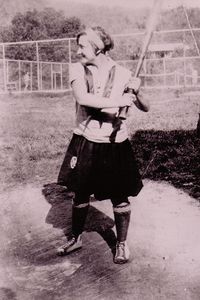 She moved to Chicago, married at age 20, into a world where the shadow of Capone hovered over her young household’s livelihood. She, her husband Aaron and my father, aunt and uncle moved to Los Angeles in 1951, first renting a house from the Mankiewicz family that was the home of the actual Rosebud from Citizen Kane. And in this city she stayed, becoming a founding volunteer for the Los Angeles County Museum of Art, to whom she provided services for approximately half a century, indulging her limitless love of art.
She moved to Chicago, married at age 20, into a world where the shadow of Capone hovered over her young household’s livelihood. She, her husband Aaron and my father, aunt and uncle moved to Los Angeles in 1951, first renting a house from the Mankiewicz family that was the home of the actual Rosebud from Citizen Kane. And in this city she stayed, becoming a founding volunteer for the Los Angeles County Museum of Art, to whom she provided services for approximately half a century, indulging her limitless love of art.
She played catch with me in our backyard in her 60s, and encouraged me in every way.
She cherished her family. And we all thought the world of her.
Fox Sports is going to begin producing dedicated Spanish-language broadcasts of the Dodgers this season, along with the Angels and Clippers. I have some details in a story this morning at Variety.
… Time Warner Cable will air the Fox-produced games even as it moves toward its proposed Spanish-language channel dedicated primarily to the Lakers, scheduled to launch before the 2012-13 NBA season. Time Warner and Fox are primary rivals for the post-2013 cable TV rights to the Dodgers.
FSN said it would produce more than 100 Spanish-language game broadcasts this year and more than 150 in 2013, with an eye on continued growth down the road. The productions will include Spanish-language play-by-play, graphics, player interviews. Announcers and a full game schedule remain to be announced, but the first game for the Angels will be April 6 and for the Dodgers will be April 11.
There will be a handful of Clipper games in Spanish before the regular season ends April 25.
Fox is not charging distributors any additional fees for the broadcasts, but rather only requiring that they be made available on expanded digital as opposed to a paid tier. Ad sales will be the primary source of revenue. …
* * *
Dee Gordon’s potential is praised by Buster Olney at ESPN.com.
Dee Gordon asks a lot of questions, something that Barry Larkin noticed the first time he worked with the Dodgers shortstop in the offseason. Precise questions, about how you hold the glove in making a play at the second base bag, about how you make sure you hit the ball on the ground when you want to, about your mental approach.
This curiosity is part of the reason Larkin came away from his conversations with Gordon believing that the son of former relief pitcher Tom Gordon will become a good player — a really good player. “He’s got the ability to be an All-Star — and a perennial All-Star,” Larkin said over the phone Friday, from Arizona. …
* * *
- Sportswriting legend Furman Bisher has passed away, at age 93. The Atlanta Journal-Constitution, where Bisher spent 59 years, has more, while Kevin Kaduk of Big League Stew points to Bisher’s seminal piece on Shoeless Joe Jackson.
- At the Daily Mirror, Mary Mallory has a long piece on original Dodger Stadium organist Bob Mitchell, whose career in music dated back to the 1920s.
- Maury Brown takes a look at the Dodger ownership finalists at Baseball Prospectus.
- Sandy Koufax had more trouble with Hank Aaron than any other hitter, according to this post by William Juliano at Bronx Banter. Willie Mays also gave Koufax fits.
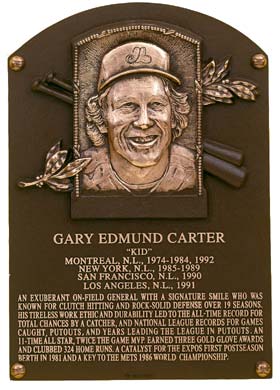 Gary Carter, the Hall of Fame catcher who spent 1991 with the Dodgers, passed away from brain cancer at the too-young age of 57.
Gary Carter, the Hall of Fame catcher who spent 1991 with the Dodgers, passed away from brain cancer at the too-young age of 57.
Carter was the subject of one of my earliest posts at Dodger Thoughts: January 7, 2003.
I’ll get back to the 2003 Dodgers soon, but I am cutting in to comment on the two players elected to the Hall of Fame today – both ex-Dodgers – Eddie Murray and Gary Carter.
Both are completely deserving, although Carter had to wait until his fifth year of eligibility. Carter is at a level just below Mike Piazza as a hitter, and since Piazza will retire as the greatest hitting catcher of all time, that’s saying something. And Carter was much better defensively. Murray played at a high level of excellence for close to 20 years. The Dodgers acquired Murray toward the end of his career, not too differently from their newest first baseman, Fred McGriff. McGriff is a Hall of Fame candidate but is a level below Murray.
I covered about two dozen major league baseball games as a reporter, and only three at Dodger Stadium. But one of my most memorable experiences involved Murray and Carter. To put it in context, Murray retired with a terrible reputation with the media; Carter retired on quite different terms.
I had patiently waited 30 minutes in the Dodger locker room before a game to interview Carter and had just begun to interview him when Murray directed me to leave the locker room. There is a rule that reporters have to leave the locker room x minutes before the game starts. I had never seen this rule enforced until Murray tried to. Carter, realizing how long I had waited and knowing I wasn’t asking a lot, let me finish the interview.
The rule is there for a reason, and I don’t begrudge its existence. I will easily give Murray the benefit of the doubt that he was probably doing what he thought was right for the team. At the same time, I was doing my job in a professional manner and it would have been nice if he had tried to work something out with me instead of trying to kick me out, no questions asked.
I am confident that no doubt some unfair and/or inappropriate things were written about Murray during his career. However, I also tend to believe that he was similarly flawed in his dealings with reporters, and that whatever was written about him in Baltimore or anywhere else, he deserves some responsibility for his reputation as a curmudgeon with the media.
The postscript to this is that today Ken Daley, the Dodgers’ main beat reporter for the Daily News, wrote an article very critical of Carter, based on incidents that occurred the same year:
Daley implies that he didn’t vote for Carter for the Hall of Fame for these reasons. I think the moral of the story is that unless you have a situation like Pete Rose or Joe Jackson, it’s best to judge HoF candidates on their on-the-field merits as much as possible.
All my best wishes to Carter’s friends and family.
Here’s the thing about Clarence Clemons, besides being part of music that has meant so much to me for what I can now say is most of my life.
The saxophone can so often be a cheesy instrument, feeling very much like an affectation, insincere. With the Big Man, it was something completely different – something searing, something jolting, something that could make you exult, or tear up, or both.
The passing of Clarence Clemons is a devastating loss for those like me who didn’t know him personally – I can only imagine what it’s like for those who did – mitigated by knowing that his music will live forever.
Statement from Harmon Killebrew at MLB.com:
“It is with profound sadness that I share with you that my continued battle with esophageal cancer is coming to an end. With the continued love and support of my wife, Nita, I have exhausted all options with respect to controlling this awful disease. My illness has progressed beyond my doctors’ expectation of cure.
“I have spent the past decade of my life promoting hospice care and educating people on its benefits. I am very comfortable taking this next step and experiencing the compassionate care that hospice provides.
“I am comforted by the fact that I am surrounded by my family and friends. I thank you for the outpouring of concern, prayers and encouragement that you have shown me. I look forward to spending my final days in comfort and peace with Nita by my side.”
Remembrances of Wally Yonamine, the first American to play baseball in Japan after World War II, are popping up — examples here, here, here and here. Yonamine passed away Monday at age 85.
* * *
Royals at Dodgers, 12:05 p.m.
Jamey Carroll, 3B
Dioner Navarro, C
Andre Ethier, RF
Matt Kemp, CF
Gabe Kapler, LF
James Loney, 1B
Jay Gibbons, DH
Ivan De Jesus Jr., 2B
Juan Castro, SS
(Tim Redding, P)
And here’s a worthy ESPN report from Tim Kurkjian:
And here are obituaries from The Associated Press and the Times.
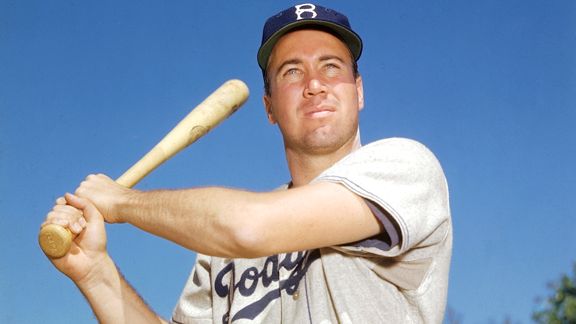
Hulton Archive/Getty ImagesThe Duke of Flatbush
My tribute to Duke Snider, who died this morning at the age of 84, from “100 Things Dodgers Fans Should Know …”
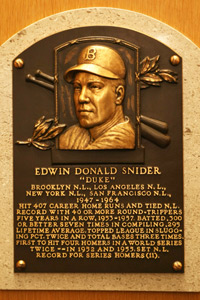
Duke Snider joined the Hall of Fame in 1980.
“With two runners on base and the Dodgers leading, 5-4, in the 12th inning, Willie Jones drove a 405-footer up against the left-centerfield wall. Duke isn’t a look-and-run outfielder, like Mays. He prefers to keep the ball in view all the time if possible, and he was judging this one every step of his long run to the wall. There it seemed he was climbing the concrete ‘on his knees,’ as awed Dodger coach Ted Lyons put it. Up and up he went like a human fly to spear the ball, give a confirming wave of his glove and fall backward to the turf. The wooden bracing on the wall showed spike marks almost as high as his head. It was such a catch that, although it saved the game for Brooklyn, admiring Philly fans swarmed the field by the dozens. Duke lost his cap and part of his shirt and almost lost his belt.”
– Al Stump, SportEdwin Donald Snider gets third billing in the Terry Cashman song, “Willie, Mickey and the Duke” – a placement that seems to celebrate as well as diminish his legacy. Snider was one of the greatest center fielders of all time, up there with Willie Mays and Mickey Mantle, but he was forever proving himself, to the Dodgers and to baseball history.
“Duke was so talented, and he had a grace about him,” said his Dodger roommate for 10 years, Carl Erskine. “They talk about (Joe) DiMaggio and how he carried himself on the field. … His outfield play and his running the bases and his trot for the home run, he just looked class, man.
“The thing that bothered Duke was, no matter how well he did, the coaches (and) managers always said, ‘He can do better than that.’ They always kind of made Duke feel no matter how hard he tried, he couldn’t satisfy everybody. It was bothersome for him.”
Snider, a Compton High School graduate from Los Angeles, even had a love-hate relationship with Ebbets Field fans, as Maury Allen writes in Brooklyn Remembered. “Snider always wore his emotions on his sleeve,” Allen said. “A home run in a key spot would produce that Hollywood handsome grin. A strikeout with the bases loaded and the Brooklyn fans booing his very name announcement the next day would result in a week of sulkiness.”
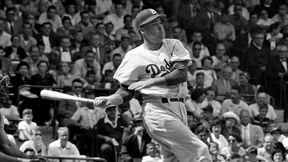 APTaking his cut, c. 1950.
APTaking his cut, c. 1950.Ultimately, like the way he climbed that Ebbets Field wall to save the game against the Phillies, Snider reached magnificent heights. He had eight full seasons and two partial seasons with EQAs of .300 or better, more than any other Dodger ever. He had at least 40 homers in the Dodgers’ five final seasons in Brooklyn, and a career .295 batting average, .380 on-base percentage and .540 slugging percentage. He hit an all-time Dodger record 389 homers.
In a 1955 article, Sports Illustrated chose Snider over Willie Mays: “In every sense, the contemporary hero of Flatbush, prematurely gray at the temples in his 29th year, is a picture player with a classic stance that seldom develops a hitch. Next to (Ted) Williams, Snider probably has the best hitting form in the game. And, like Williams, he has amazing eyes — large, clear, calm and probing. With each oncoming pitch, Snider tenses and then throws his full 195 pounds into it, if he swings, with a smooth, lashing motion.”
The Duke was much, much more than a name in a song.
This is a tectonic passing. The Duke is iconic, a legacy carved in granite. We will truly miss you.
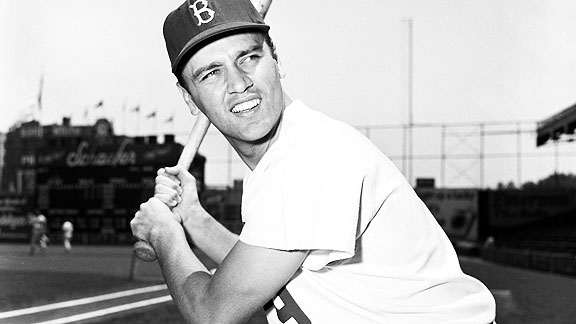
Getty ImagesGino Cimoli
Gino Cimoli, the first batter in Los Angeles Dodgers history, passed away Saturday at age 81, according to the San Francisco Chronicle.
Cimoli came up with the Brooklyn Dodgers in 1956 at age 26 and was the leadoff batter in the inaugural major league regular season game in California, on April 15, 1958 at Seals Stadium in San Francisco. Cimoli struck out in Los Angeles’ 8-0 to the Giants.
“Gino was a part of history not just as a member of both the Brooklyn and Los Angeles Dodgers, but throughout the game of baseball because of his role in the first-ever big league game on the West Coast,” a Dodgers spokesman told ESPNLosAngeles.com when asked about the Chronicle’s report. “The rivalry between the Dodgers and Giants picked up where it left off in New York, and Gino was the fortunate one to lead off that afternoon in his hometown. He will undoubtedly be missed by all who knew him, and our thoughts and condolences go out to his family and friends.”
Cimoli batted .269 with 19 homers in three seasons with the Dodgers, before going on to play for the Pittsburgh Pirates, Milwaukee Braves, St. Louis Cardinals, Kansas City A’s, California Angels and Baltimore Orioles in a career that ran through 1965. In 10 seasons, he had a .265 average with 808 hits and 44 home runs.
Cimoli’s Los Angeles highlight came on Sept. 1, 1958, when he went 4 for 7 with a walk and scored the go-ahead run in the top of the 16th inning against the Giants, in a game San Francisco rallied to win. The Dodgers traded Cimoli to St. Louis after the 1958 season for Wally Moon and Phil Paine.
Cimoli, who went 5 for 20 with two walks for the Pirates in the 1960 World Series, had a pinch-hit single to lead off the bottom of the eighth inning in Pittsburgh’s memorable Game 7 victory. As a rookie, he was on the Dodgers’ 1956 World Series team but did not bat.
More from John Shea in the Chronicle:
… Cimoli was a Brooklyn Dodger but a San Franciscan at heart. He was inserted atop the lineup by manager Walter Alston, who knew the significance of the North Beach legend and kid from Galileo High School becoming the first big-league batter following the Giants’ and Dodgers’ relocation from New York.
Cimoli died Saturday morning of kidney and heart complications. He was 81.
“Gino was just an all-around nice guy,” said friend Bob Tobener, who had helped organize functions in recent years at which Cimoli spoke. “He was a great athlete. Out of high school, people said he was a better basketball player than baseball player. . . . He was a really good hitter.” …
… His daughter, Cherryl Keast, said, “Our life totally revolved around baseball. Baseball was our life, not that that was a bad thing. We lived where he played.”
